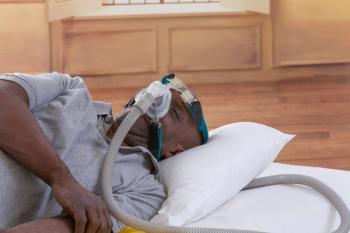
Stigma of Living With Type 1 Diabetes Linked to Poor Glycemic Control in Study of Youth
Nearly two-thirds of those participating in the study reported feelings of stigma from having to manage type 1 diabetes.
The decade of high school through college is a stressful time for teens and young adults. There’s finishing school, picking a career, learning to function apart from your parents. Add in a diagnosis of type 1 diabetes (T1D), with the sudden need to watch everything you eat, monitor blood glucose, and take insulin, and life can seem overwhelming.
For many between the ages of 14 and 24, there’s the added factor of stigma—many don’t want to be seen fiddling with a continuous glucose monitor (CGM) or administering insulin in front of friends. They may not want to share with new acquaintances that they have T1D. So, many slack off diabetes management.
This phenomenon is explored in a new study appearing in the Journal of Medical Internet Research, which finds a link between the level of stigma experienced by adolescents and young adults and a lack of glycemic control. Researchers recruited 380 participants, many through social media, and gathered information via an online survey; answers to 3 specific questions from the Barriers to Diabetes Adherence questionnaire helped researchers rate respondents’ feelings of stigma. Participants also provided a blood sample, and results of a glycated hemoglobin (A1C) test were matched with responses.
Overall, stigma prevalence was 65.5% (95% CI, 60.7-70.3). Those who experienced stigma were more than twice as likely to have poor glycemic control, after adjusting for age, gender, and treatment type (odds ratio [OR], 2.25; 95% CI, 1.33-3.80). Researchers found a high degree of association between stigma and A1C levels above 9% (OR, 3.05; 95% CI, 1.36-6.86), as well as an episode of severe hypoglycemia in the past year (OR, 1.86; 95% CI, 1.05-3.31).
In the United States,
Yet, while vigilance in childhood and adolescence is crucial, the period of transition from childhood to adulthood is known to be a high-risk time for people with T1D. In an
Senior study author Kaberi Dasgupta, MD, of the Metabolic Disorders and Complications Program at the Research Institute at McGill University Health Center, said having to manage T1D at a time when there are so many other life transitions can make young adults very angry. “A lot of things that tend to be automatic in our bodies suddenly have to be managed, which is super stressful,” Dasgupta said
Young people with T1D “are always kind of dancing with death—constantly treading that fine line.”
The authors call for targeted strategies to reduce stigma, something that Laffel has been working on her entire career. New longer-acting insulins that offer more protection from hypoglycemia and new CGM devices that are smaller or don’t have to be calibrated offer options that could make adherence easier. (The
“Diabetes care can wear people down, so we need to be innovative in our interventions and our approaches, and continually try different approaches that meet patients’ needs. In other words, we need to keep coming up with new ways to keep patients and their families active and engaged,” she said.
Reference
Brazeau AS, Nakhla M, Wright M, et al. Stigma and its association with glycemic control and hypoglycemia in adolescents and young adults with type 1 diabetes: cross-sectional study. J Med Internet Res. 2018;20(4):e151. doi: 10.2196/jmir.9432.
Newsletter
Stay ahead of policy, cost, and value—subscribe to AJMC for expert insights at the intersection of clinical care and health economics.













































